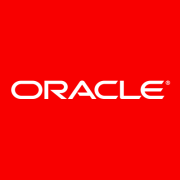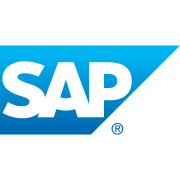PeerSpot’s crowdsourced user review platform helps technology decision-makers around the world to better connect with peers and other independent experts who provide advice without vendor bias.
Our users have ranked these solutions according to their valuable features, and discuss which features they like most and why.
You can read user reviews for the top Talent Acquisition Tools to help you decide which solution is best for you.
Users compare and give feedback on Talent Acquisition Tools that they’ve used — based on product reviews, ratings, and comparisons.
#1 SAP SuccessFactors
SAP SuccessFactors is ranked as PeerSpot’s #1 Talent Acquisition Tool. Our users give SAP SuccessFactors an average rating of 8 out of 10.
Rania K., HRIS Manager at an engineering company, says, "This solution has automatic linking and reporting features. Upgrades are hassle-free because you don't need to change everything from scratch, when compared to Meta4."
A Managing Director at a computer software company mentions, "I think it's perfect that every requirement has flexibility in how it is handled, and that there are several workarounds for any problem we are looking to solve. Each problem has multiple solutions, so it gives us a lot of flexibility in terms of processes."
Uma D., AVP - HR IT at a consumer goods company, comments, “It's the performance management feature that I find most valuable in this product. As for the product itself, I like its flexibility and configurability. It can handle different types of performance management from one organization to another, and this is one of its best features.”
#2 PeopleSoft
PeopleSoft is ranked as PeerSpot’s #2 Talent Acquisition Tool. Our users give PeopleSoft an average rating of 8 out of 10.
A Regional Director at a tech services company states, “The most valuable feature is that it's wide and broad and it does about everything anybody needs in a major organization from a back-office systems point of view. It's a mature product.”
A Global Manager Information Security at a manufacturing company explains, “The feature that I have found most valuable is having the sources so that you're able to adapt the product to your needs. That was a big benefit. Then, when we chose Oracle, it was also for the graphical interface, which was already uploaded at that time. These are the two big advantages.
An HR/Pay Systems Administrator/Director at a university says, “PeopleSoft is a good core system. It has a lot of functionality. They frequently update the solution and recently they have added some good enhancements features for higher education. We just switched to the new fluid interface and that is working very well for us and is very good. Employees can use PeopleSoft to input their time and their own absences. Additionally, they can look at their paychecks and configure their direct deposits.”
#3 Workday
Workday is ranked as PeerSpot’s #3 Talent Acquisition Tool. Our users give Workday an average rating of 8 out of 10.
Andy H., Director of HR at a healthcare company, mentions, “The solution really is so simple to use for the end-user. If you're one of those end-users that need reports, it will create it for you on the fly. The report creation just makes sense.” He also adds, “The mobile platform works very well. It's very seamless.”
A Director at a financial services firm expresses, “It helps the users to enroll for the benefits automatically and update their life events without the involvement of HR individuals or back-office staff. It enables a person to take action on their own. It reduces the administrative burden on HR and puts the ownership on the person that is going through the life event, whether it is having a child, taking a leave of absence, or something else.”
Rahul G., a Consultant at a consultancy, says, “The reporting feature is quite easy for a layman to use, and the look and feel of the application is good. Its security is robust. You will never find a use case that cannot be covered.”
#4 Oracle HCM Cloud
Oracle HCM Cloud is ranked as PeerSpot’s #4 Talent Acquisition Tool. Our users give Oracle HCM Cloud an average rating of 8 out of 10.
PeerSpot user Wouter S., Account Manager at Qualogy, states, “The HCM Core (incl. Self Service and Absence management) is very complete, user friendly, scalable and stable. Talent management is good to find top-performers and make improvement plans for and with other workers.”
Another reviewer, a General Manager - Software Solutions at a tech services company, comments, “This is a very comprehensive solution, covering every aspect of the HCM profit cycle and the life cycle. It's got from hire to fire. It also has the additional capability for a balanced scorecard, which is a key component of any company evaluation. That comes as part of the balanced scorecard concept, as part of a strategy process within the HCM product portfolio. It's a huge benefit to anyone taking up the Oracle HCM solution.”
An Associate Vice President at a tech services company explains, "The solution is very good at building out a roadmap based on client needs and feedback."
#5 SmartRecruiters
SmartRecruiters is ranked as PeerSpot’s #5 Talent Acquisition Tool. Our users give SmartRecruiters an average rating of 8 out of 10.
Logan B., a Recruiter at a consultancy, says, “The features that I've found most valuable would be the collaboration with the hiring managers, and being able to get them more involved in the process without having to shoot emails back and forth and having the inbox gets so jammed up, especially these days.” Additionally, he says, “The second thing I really like about the product is the candidate experience side of things. It really allows for more interaction and engagement with our candidates. Even if that's just being able to give feedback right away to candidates, whether they're a good fit or not.”
A Human Resources Director, Lake Port Square at a healthcare company, states that he likes the solution because it is “Reasonably priced, reduces recruiting costs, and is very scalable.”




